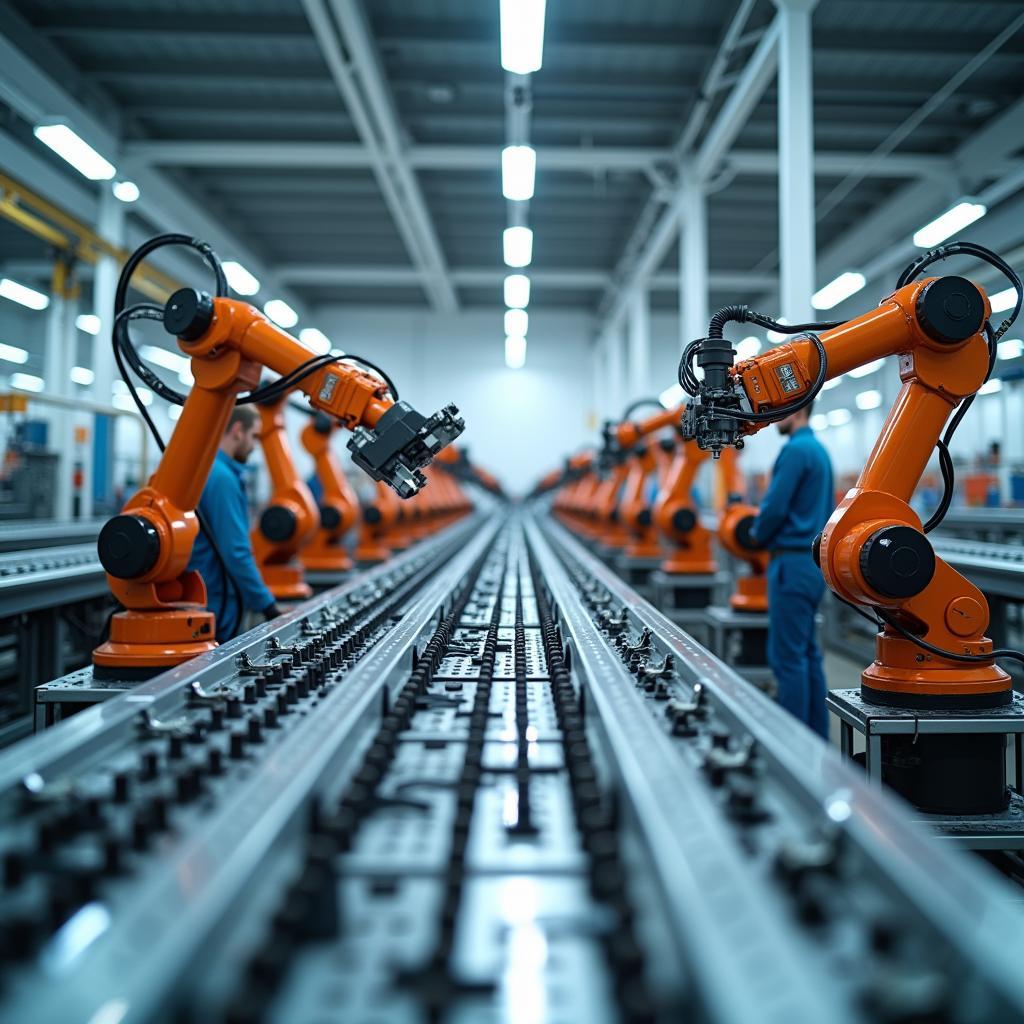The digital revolution has significantly impacted various sectors, including traditional industries. Examination of this topic, “The influence of digital innovation on traditional industries,” frequently appears in IELTS Writing Task 2 prompts as it explores the intersection of technology, industry adaptation, and economic implications. Here are some potential IELTS Writing Task 2 prompts you might encounter:
Nội dung bài viết
- To what extent do you agree or disagree that digital innovation has transformed traditional industries for the better?
- Discuss the advantages and disadvantages of digital innovations in traditional manufacturing sectors.
- Digital innovation is said to disrupt traditional industries. Discuss both views and give your opinion.
Selected Topic for Model Essay
For this exercise, we will develop a complete sample essay for the first prompt:
“To what extent do you agree or disagree that digital innovation has transformed traditional industries for the better?”
Analyzing the Prompt
The task asks you to evaluate whether digital innovation has had a positive transformation on traditional industries. You need to express your agreement or disagreement with this statement, substantiated with concrete examples and logical arguments.
Model Essay
Digital innovation has undeniably permeated every aspect of our lives, reshaping traditional industries in unprecedented ways. This essay argues that digital innovation has not only revolutionized, but also greatly enhanced traditional industries by increasing efficiency, reducing costs, and opening new avenues for growth.
Firstly, digital innovation has significantly increased efficiency in traditional industries. For instance, in the manufacturing sector, the incorporation of automated machinery and AI-driven processes has dramatically enhanced productivity levels. AI systems can execute routine tasks with high precision and speed, which reduces human error and downtime. This technological advancement has allowed companies to meet consumer demands more effectively, thereby increasing overall competitiveness.

Secondly, the adoption of digital technologies has led to substantial cost reductions. Digital tools such as cloud computing and data analytics enable businesses to optimize their supply chains, manage resources more effectively, and reduce overhead costs. For example, cloud-based platforms offer scalable solutions that negate the need for extensive physical infrastructure, saving companies considerable amounts in terms of both capital investment and operational expenses.
Moreover, digital innovation has opened up new growth avenues for traditional industries. E-commerce exemplifies this growth by transforming retail. Small businesses can now reach a global audience through online platforms, a feat that was previously unattainable. This kind of innovation not only elevates the market reach but also introduces new business models that can adapt to changing consumer behaviours and economic conditions.
However, it is essential to acknowledge that these changes come with challenges. Job displacement due to automation and the digital divide can lead to socio-economic imbalances. Workers in traditional sectors may find it challenging to transition to new digital roles without adequate training and support. Therefore, it is imperative for governments and businesses to invest in skill development programs to ensure a smooth transition for the workforce.
In conclusion, while digital innovation presents challenges, its transformative benefits for traditional industries are substantial. It enhances efficiency, reduces costs, and fosters new growth opportunities, outweighing the disadvantages. Thus, I firmly agree that digital innovation has positively transformed traditional industries.
(Word count: 330)
Important Considerations When Writing
-
Vocabulary and Expressions:
- Efficiency (n): /ɪˈfɪʃnsi/ – the ability to accomplish a task with minimal waste of time and effort.
- Automated (adj): /ˈɔːtəmeɪtɪd/ – operated by automatic equipment.
- AI-driven (adj): /eɪ aɪ ˈdrɪvən/ – powered or driven by artificial intelligence.
- Cloud computing (n): /klaʊd kəmˈpjuːtɪŋ/ – the practice of using a network of remote servers hosted on the internet to store, manage, and process data.
- Displacement (n): /dɪsˈpleɪsmənt/ – the moving of something from its place or position.
-
Grammar and Usage:
- Use complex sentences to demonstrate a higher level of language proficiency.
- Ensure the consistency of verb tenses throughout the essay.
- Utilize connectors and transition words (e.g., Firstly, Secondly, Moreover, However, In conclusion) to enhance the flow and coherence.
Difficult Vocabulary
- Permeate (v): /ˈpɜːmieɪt/ – to spread throughout something.
- Unprecedented (adj): /ʌnˈpresɪdentɪd/ – never done or known before.
- Optimize (v): /ˈɒptɪmaɪz/ – to make the best or most effective use of a situation or resource.
- Attainable (adj): /əˈteɪnəbl/ – able to be achieved.
- Adequate (adj): /ˈædɪkwət/ – satisfactory or acceptable in quality or quantity.
Conclusion
In summary, digital innovation has a profound impact on traditional industries, leading to improved efficiency, reduced costs, and expanded growth opportunities. It is crucial for students preparing for the IELTS to understand the significance of these impacts and articulate them effectively in their essays. Prompts related to digital innovation and its effects are likely to be encountered in IELTS writing tasks, and thus, being prepared to discuss this topic comprehensively can be highly beneficial.
Additional related topics for further practice include examining “The effects of the digital revolution on employment” and “The role of digital innovation in economic development,” which can be explored at ielts.net and ielts.net respectively.